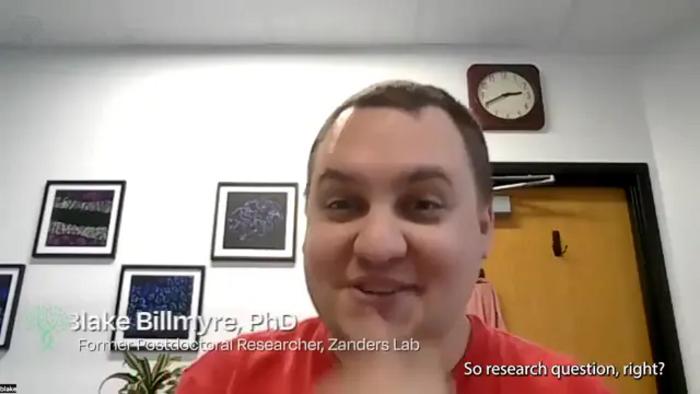In a groundbreaking study poised to reshape antifungal therapy development, researchers from the Stowers Institute for Medical Research and the University of Georgia have unveiled a comprehensive genetic map detailing the essential genes that drive survival and drug resistance in the deadly fungus Cryptococcus neoformans. This pathogen, responsible for causing life-threatening infections predominantly in immunocompromised patients, claims approximately 150,000 lives annually, underscoring a critical need for innovative treatment strategies. Current antifungal options remain woefully inadequate due to the pathogen’s complex biology and the close genetic relationship fungi share with human hosts, which complicates the discovery of therapeutics that selectively target fungal cells without harming human tissues.
Published in PLOS Biology on June 5, 2025, this study harnessed the power of transposon mutagenesis sequencing (TN-seq), a high-throughput technique that allowed the team to engineer millions of mutations across the fungal genome. By doing so, the researchers were able to systematically identify which genes are indispensable for C. neoformans viability. Unlike traditional gene deletion methods that analyze one gene at a time, TN-seq enables genome-wide screenings, drastically accelerating the pace of discovery. This approach revealed more than 1,400 genes essential for fungal survival, of which over 300 genes displayed no homology to any human counterparts, providing exclusive targets for future antifungal drug design.
The significance of identifying fungal-specific essential genes cannot be overstated. Due to evolutionary kinship, many fungal genes share similarities with human genes, increasing the risk that antifungal compounds will inadvertently affect human cells, leading to toxicity. By pinpointing a subset of crucial fungal genes without human analogs, the study lays the foundation for therapies with reduced side effects. Furthermore, the researchers distilled a shortlist of approximately 30 genes conserved across multiple pathogenic fungi. Targeting these conserved genes offers the tantalizing possibility of developing broad-spectrum antifungals that could tackle a variety of fungal infections, thereby addressing a pressing global health challenge.
The research team, led by Blake Billmyre, Ph.D., Assistant Professor at the University of Georgia and former postdoctoral researcher at the Stowers Institute, employed an analogy from World War II to explain the power of TN-seq. When allied fighter planes were returning with bullet holes, military strategists mapped the damage to reinforce the planes. Crucially, the areas that showed no damage were not better protected but were likely the spots that, when hit, resulted in planes being lost. Similarly, by analyzing which genetic regions of C. neoformans lack transposon insertions, scientists can infer that these regions are essential—damage to them results in fungal cell death, and thus these mutants do not survive to be sequenced.
This innovative application of TN-seq to C. neoformans marks the first time this pathogen has been analyzed using this robust genome-wide approach. By bombarding fungal populations with transposons—mobile DNA elements capable of inserting themselves randomly into the genome—the researchers constructed a vast mutant library. This resource not only allows the identification of essential genes but also sheds light on genes involved in drug resistance, especially resistance to fluconazole, a standard antifungal medication widely used to treat cryptococcal infections. Understanding the genetic underpinnings of drug resistance mechanisms is vital for combating treatment failures and emerging resistant strains.
Historically, robust antifungal drug discovery has been hindered by several factors, including the genetic similarity between fungi and humans and the complexity of fungal life cycles. By integrating genetic disruption data at a genome-wide scale with evolutionary conservation analyses, the current work overcomes many of these hurdles. It not only provides a detailed "atlas" of genetic vulnerabilities but also offers a roadmap for prioritizing targets for drug development that are both efficacious and safer for human use.
The study’s technical rigor extends to the nuanced analysis of promoter and regulatory regions, areas of the genome that govern the activation and repression of essential genes. Such regulatory dynamics are critical in the fungus’s adaptation and survival strategies, including its response to antifungal drugs. By mapping mutations not only in coding sequences but also in these regulatory elements, the research opens new avenues to disrupt fungal gene expression programs necessary for pathogenicity.
Beyond antifungal resistance, the research has implications for understanding how fungal pathogens adapt to the human host environment. Billmyre’s lab is currently investigating gene networks that enable C. neoformans to survive and proliferate at human body temperature—a key determinant of pathogenic potential. This work is especially pertinent in the context of global climate change, where rising environmental temperatures may foster the emergence of new fungal pathogens capable of infecting humans.
Co-authors including Caroline Craig, Joshua Lyon, Claire Reichardt, Amy Kuhn, and Michael Eickbush contributed to refining the mutagenesis techniques and data analysis that empowered this study. Their combined efforts, supported by substantial NIH funding and institutional support, solidify the foundation for a new era in fungal genomics and therapeutic discovery.
Through pioneering use of TN-seq in Cryptococcus neoformans, this research represents a formidable leap forward in our understanding of fungal biology and drug resistance. It lays a critical groundwork for the development of next-generation antifungal agents urgently needed to address the global burden of fungal infections, which presently lack effective and safe therapeutic options.
Subject of Research: Cells
Article Title: Landscape of essential growth and fluconazole-resistance genes in the human fungal pathogen Cryptococcus neoformans
News Publication Date: June 5, 2025
Web References:
https://journals.plos.org/plosbiology/article?id=10.1371/journal.pbio.3003184
References:
Billmyre, B. et al. (2025). Landscape of essential growth and fluconazole-resistance genes in the human fungal pathogen Cryptococcus neoformans. PLOS Biology. DOI:10.1371/journal.pbio.3003184
Image Credits: Stowers Institute for Medical Research
Keywords: Fungal infections, fungal pathogens, resistant strains, infectious disease transmission, host pathogen interactions, disease outbreaks, human health, cell biology, genetics, immunology, microbiology, molecular biology, mycology, fungi




